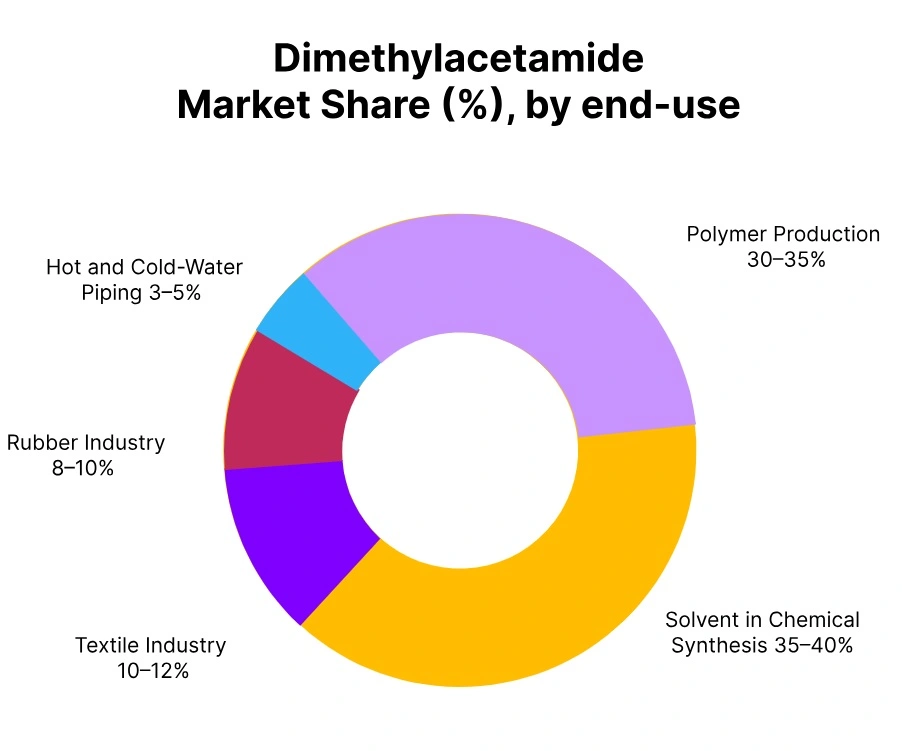Price-Watch’s most active coverage of Dimethyl Acetamide price assessment:
- IG (99% min) FOB Shanghai, China
- IG (99% min) CIF Buenos Aires (China), Argentina
- IG (99% min) CIF Haiphong (China), Vietnam
- IG (99% min) CIF Nhava Sheva (China), India
- IG (99% min) Ex Bhiwandi, India
Dimethyl Acetamide (DMAC) Price Trend Q3 2025
In Q3 2025, the global Dimethyl Acetamide (DMAC) market showed moderate stability with regional variations. The price trend for DMAc fluctuated sharply during the July-September 2025 quarter, influenced by stable feedstock costs, energy prices, and regional supply chain dynamics.
Despite some fluctuations in upstream factors, consistent demand from the pharmaceutical, chemical, and textile industries supported price stability. Ongoing expansions in production capacity and supply chain adjustments are expected to sustain stable prices in the upcoming quarter.
Argentina
Dimethyl Acetamide (DMAC) import price CIF Buenos Aires, Argentina, Grade- Industrial Grade 99.9% Purity.
In Q3 2025, Dimethyl Acetamide (DMAC) price in Argentina increased by 21.6%, reflecting moderation in imports due to tightening global supply conditions. The Dimethyl Acetamide (DMAC) price trend in Argentina faced upward pressure, as feedstock Acetic Acid and Anhydrous Dimethylamine availability tightened due to rising domestic consumption in China. Exporters became more selective, limiting flexibility in overseas shipments, and Argentine buyers responded cautiously.
In September 2025, the dimethyl acetamide prices in Argentina have been assessed at USD 1044 per metric ton. While demand from Argentina’s pharmaceutical sector remained firm, textile demand slowed, weighed down by inflationary pressures and weaker consumer spending. Freight conditions remained high compared to historical averages, keeping landed costs elevated.
Currency volatility in Argentina further constrained procurement decisions, prompting buyers to adopt leaner inventory practices. Overall, Q3 2025 highlights a shift in sentiment from earlier optimism, with constrained upstream supply and higher cost bases impacting Argentina’s import activity despite ongoing demand.
China
Dimethyl Acetamide (DMAC) Export price FOB Shanghai, China, Grade- Industrial Grade 99.9% Purity.
In Q3 2025, Dimethyl Acetamide (DMAc) price in China increased by 10.6%, reflecting a moderation in export momentum after the strong performance of the previous quarter. The Dimethyl Acetamide (DMAC) price trend in China faced challenges on the supply side, with tight feedstock Acetic Acid availability due to increased domestic consumption and limited expansion capacity of Anhydrous Dimethylamine supplies. These factors placed upward pressure on production costs, reducing exporters’ ability to sustain earlier levels of competitiveness.
According to Price-Watch, in September 2025, the dimethyl acetamide prices in China have been assessed at USD 895 per metric ton. Logistics inefficiencies also resurfaced, with regional freight costs firming due to seasonal container shortages. While importers in Southeast Asia and South Asia continued procurement at slightly reduced levels, some European buyers turned to alternative suppliers for price relief.
Despite these challenges, export volumes remained resilient, albeit at moderate levels compared to Q2. Overall, the Q3 2025 price change highlights the impact of upstream constraints on Dimethyl Acetamide (DMAC) export dynamics.
Vietnam
Dimethyl Acetamide (DMAC) import price CIF Haiphong, Vietnam, Grade- Industrial Grade 99.9% Purity.
In Q3 2025, Dimethyl Acetamide (DMAC) price in Vietnam increased by 9.8%, as imports continued rising, though at a slower pace compared to the previous quarter. The Dimethyl Acetamide (DMAC) price trend in Vietnam was influenced by steady demand from the textile sector, while the pharmaceutical and chemical industries sustained procurement.
However, concerns over tightening global feedstock supply began to impact trade sentiment. In September 2025, the dimethyl acetamide prices in Vietnam have been assessed at USD 933 per metric ton. FOB China offers firmed in Vietnam, reflecting cost pressures from constrained availability of Acetic Acid and limited expansion in Anhydrous Dimethylamine production.
Export flexibility narrowed as Chinese producers prioritized domestic demand, while freight rates across Southeast Asia edged up slightly due to seasonal container demand, contributing to higher landed costs.
Vietnamese buyers responded cautiously, securing necessary volumes but avoiding large forward bookings, wary of potential rising input costs. Overall, Q3 2025 reflects a phase of slower momentum, with persistent demand supporting imports but tightening upstream fundamentals beginning to temper trade enthusiasm.
India
Dimethyl Acetamide (DMAC) import price CIF Nhava Sheva, India, Grade- Industrial Grade 99.9% Purity.
In the third quarter of 2025, the pricing of Dimethyl Acetamide (DMAc) exhibited a 14.4% upsurge (CIF basis – from China) and a 2.96% spike (Ex Bhiwandi-basis) in India. The sequential rise in Dimethyl Acetamide (DMAC) prices in India reflects a broad moderation in production and supply due to the aforementioned tightness in upstream conditions.
In particular, the availability of feedstocks has been pressurized as regional competition for acetyl-based intermediates developed. As of September 2025, the prices of dimethyl acetamide in India have been assessed at USD 988 per metric ton. This entailed further pressure on operating costs and brought concern about the continued capacity of producers to operate at earlier levels of output.
While downstream demand has been steady across a mix of customers (with pharmaceuticals continuing to add strong demand) indications of seasonal moderation against the backdrop of the monsoon weather have been witnessed in textiles applications. With supply concerns on the table, producers balanced a careful approach to sourcing and meeting proper customer demand with a more conservative approach to inventory management.




